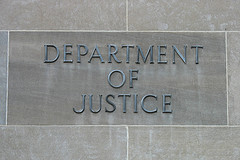 On February 21, 2014, the U.S. Department of Justice released its long-awaited revisions to 28 C.F.R. § 50.10, the DOJ's regulatory guidelines (the "Guidelines") regarding investigations and prosecutions of members of the news media. The prior version of the Guidelines came under fire last year, when it was revealed that the DOJ had, without prior notification, obtained two months of telephone records from 21 phone lines used by the Associated Press. These records had the potential to reveal confidential sources and other sensitive information relating to ongoing journalistic investigations. At that time, I wrote about weaknesses in the Guidelines' protections against unwarranted interference with journalism.
On February 21, 2014, the U.S. Department of Justice released its long-awaited revisions to 28 C.F.R. § 50.10, the DOJ's regulatory guidelines (the "Guidelines") regarding investigations and prosecutions of members of the news media. The prior version of the Guidelines came under fire last year, when it was revealed that the DOJ had, without prior notification, obtained two months of telephone records from 21 phone lines used by the Associated Press. These records had the potential to reveal confidential sources and other sensitive information relating to ongoing journalistic investigations. At that time, I wrote about weaknesses in the Guidelines' protections against unwarranted interference with journalism.
In the wake of these revelations, the DOJ announced that it would revise the Guidelines to provide significant new procedural protections for the press. I'll let others review the provisions of the new Guidelines in detail; for now, I want to point out one critical omission. Although the Guidelines extend certain protections to "members of the news media," they (like the prior version) still contain no affirmative definition of that term.
Instead, the only way in which "members of the news media" are defined is through exclusions. A number of these exclusions (predictably) relate to persons acting as agents of a foreign power, plotting terrorist activity, et cetera. More problematic are the implications of the following provision:
A Deputy Assistant Attorney General for the Criminal Division may authorize, under an applicable [Privacy Protection Act] exception, an application for a warrant to search the premises, property, or communications records of an individual other than a member the news media, but who is reasonably believed to have "a purpose to disseminate to the public a newspaper, book, broadcast, or other similar form of public communication."
28 C.F.R. § 50.10(d)(6). The phrase "person reasonably believed to have a purpose to disseminate to the public a newspaper, book, broadcast, or other similar form of public communication" is how a journalist is defined in the Privacy Protection Act of 1980. The Privacy Protection Act was passed in response to concerns about the use of search warrants to invade newsrooms, and the inadequacy of Fourth Amendment standards for issuing warrants in the face of the special concerns raised by government investigations of journalists. Wisely, the Privacy Protection Act did not attempt to define journalists in terms of their organization or employment, but instead in terms of their function; this has enabled the Act to be flexible in responses to changes in technology and the journalism industry.
We still do not know what "members of the news media" means in the new DOJ Guidelines, but (by the way the above provision is phrased) we know that it is more restrictive than the functional definition of the Privacy Protection Act. This should give independent journalists significant pause. When government agencies attempt to define a journalist, they tend to adopt either an employment-based approach or a functional approach; the DOJ now seems to be eschewing a functional definition (or at least one as broad as in the Privacy Protection Act).
Moreover, apart from the single provision quoted above, the new Guidelines do not protect anyone who is not a "member of the news media"; in particular, they do not protect against the use of legal demands to third party carriers for communications records. This leaves journalists unaffiliated with a news organization on potentially unstable ground with respect to the security of their communications against secret government inquiries.
Jeff Hermes is the Director of the Digital Media Law Project.
(Image courtesy of Flickr user Peter Eimon pursuant to a Creative Commons CC BY-NC-SA 2.0 license.)




